Knowing when to harvest bananas requires knowledge of specific varieties and how they respond to the climate in which you live.
Generally, you can wait until at least one banana finger turns yellow, then cut the entire bunch. This method works great for home use, but can be risky, since some varieties do not ripen on the tree well.
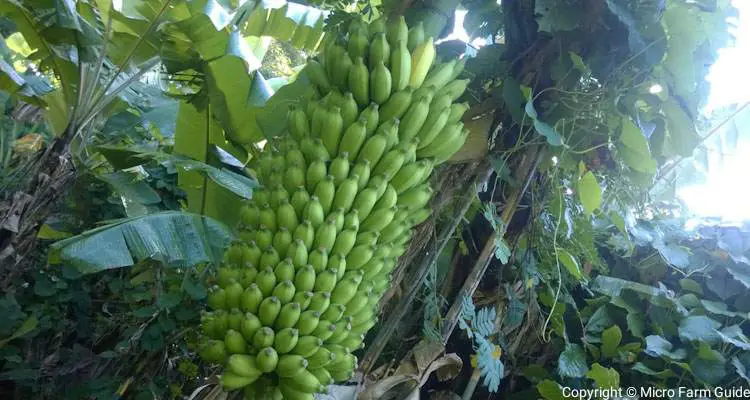
As a result, you will have to take a more scientific approach, which will require some observation and practice to master.
In this article, you will learn how to tell when bananas are ready to harvest and some tips on harvesting and ripening the fruits at home. With that said, let’s take a look at the following.
Do Bananas Ripen On The Tree?
Bananas can ripen naturally on the tree in warm climates but may have some defects based on the variety.
For example, it is common for the skin of “rock fig” bananas to split, while plantain trees often topple over due to the weight of the bunch.
In most instances, tree-ripened bananas taste much sweeter than “gas-ripened” ones. However, they can be unpredictable and not suitable for long-distance travel.
As a result, it is common practice to harvest bananas when they are still green, then ripen them slowly in a controlled environment.
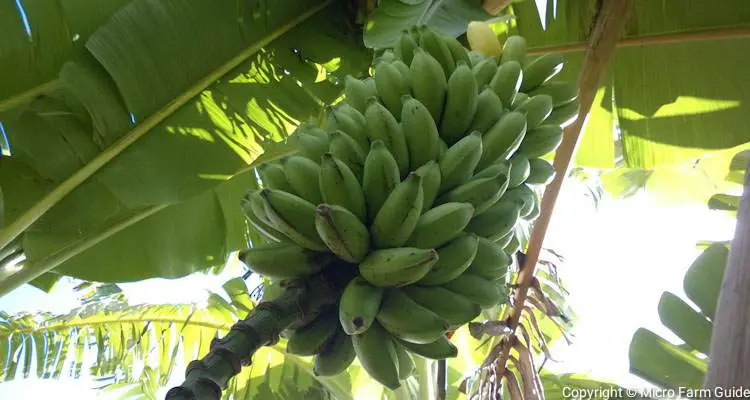
How Can You Tell If The Banana Fruits Are Ready For Harvest?
Banana trees take between 9 and 12 months to grow to maturity. Then another 3 to 4 months from the time the flower emerges until the fruit matures.
Bananas are ready to harvest when they are fully developed, with slightly rounded edges and a light green color. However, they are usually harvested before this point if intended for long distance travel.
At this point, they are not yet ripe and can be used in various ways, including cooking, but most importantly, they are easy to handle and transport without becoming damaged.
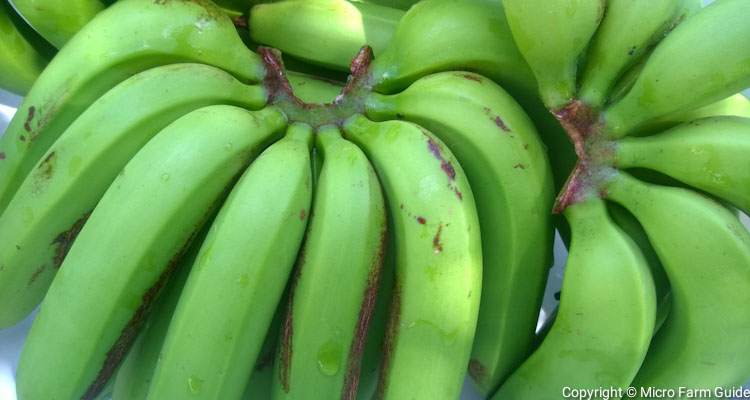
How To Pick Bananas Off The Tree
Banana trees can grow up to 40 feet tall and produce bunches weighing over 50 lbs. So, think twice before reaching for that ladder. The best way to pick bananas off the tree is as follows:
- Make a shallow cut on the stem in the direction where the bunch is hanging.
Note: The shallow cut will cause the tree to lean under the weight of the bunch and help control the speed at which the tree falls.
- Hold the bottom of the bunch and guide it until it touches the ground gently.
- Once firmly on the ground, cut the stalk connecting the banana tree to the bunch.
Note: Do not cut the stalk until it rests securely on the ground, or you risk damaging the bottom hands of the bunch or your back as it falls.
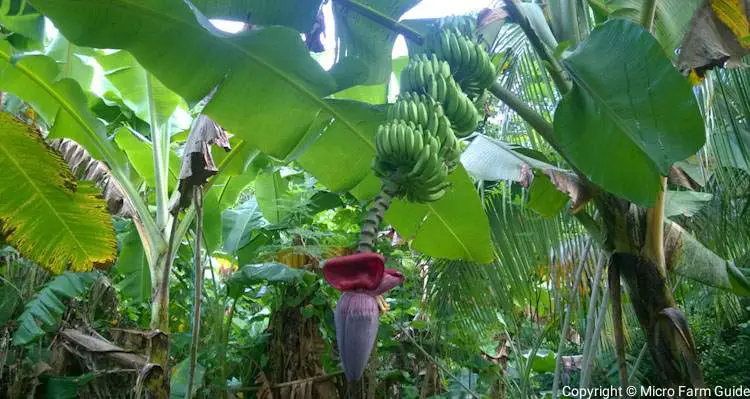
What To Do After Harvesting Bananas?
After harvesting Bananas, you must inspect them to see if there any creatures hidden between the fingers.
I usually find crickets and bugs, with the occasional serpents tucked in between the hands. So, I would suggest that you wear gloves and do not panic.
Next, you should submerge the bananas in a body of water. You can use a bucket for individual hands or a large tub for the entire bunch.
In the case of Tree Boas, I usually carry the entire bunch to the river and place it in the basin. This gives the serpent a chance to swim away without any force.
Afterward, you need cut the banana stalk and remove it from the stool. There are several ways to do this, but we use the method covered in our Syntropic Bananas article.
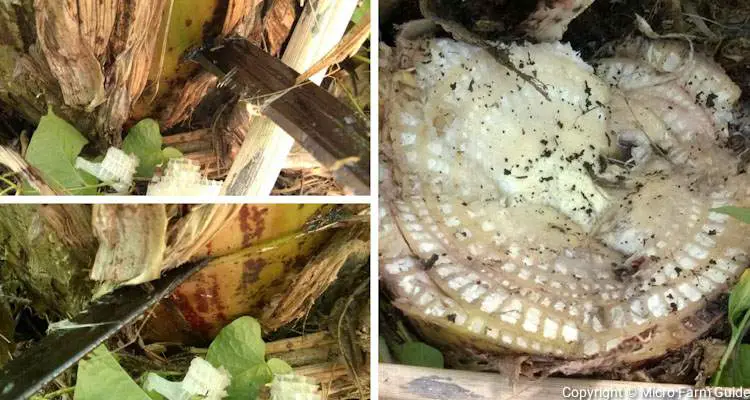
How To Hang Bananas To Ripen?
Hanging bananas is an excellent way to control the rate at which they ripen. This also limits damage caused from the weigh of the bunch resting on surfaces.
You can tie the banana stalk using a rope or specialized hook. We usually use a fabric type called a “cement rope” for this purpose.
Then hang the bunch in a cool, dark, well-ventilated area. You might need to divide the bunch into two parts, or get some help if necessary.
How To Unhand Bananas From Bunch
There are several ways to unhand bananas from a bunch. However, the two most common are as follows:
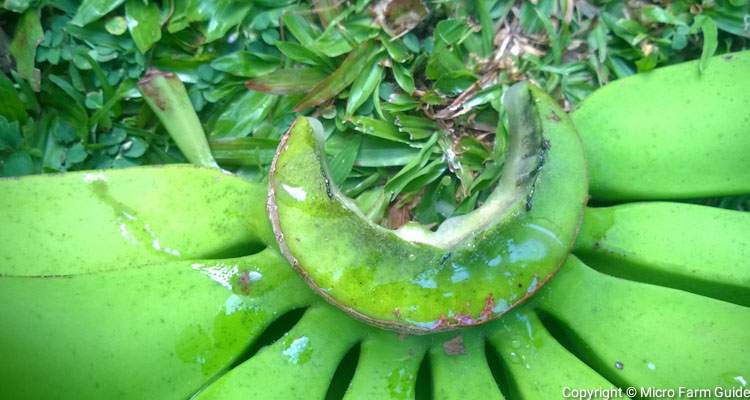
1. Separate The Hands Of Bananas From The Stalk
The most efficient way to unhand bananas is to separate them from the stalk using a sharp knife. To do this:
- Stand the bunch of bananas upright, similar to how it was harvested.
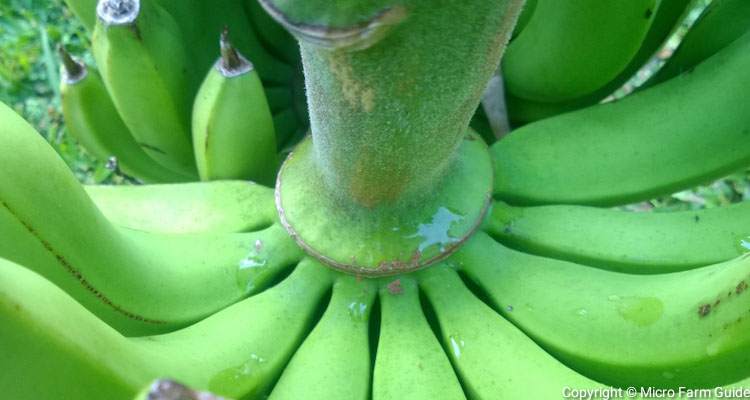
- Locate the clump of banana stems, where they connect to the stalk.
- Use a sharp knife to pierce the area where the banana cluster meets the central stalk. Start at one end and continue piercing until you reach the other end.
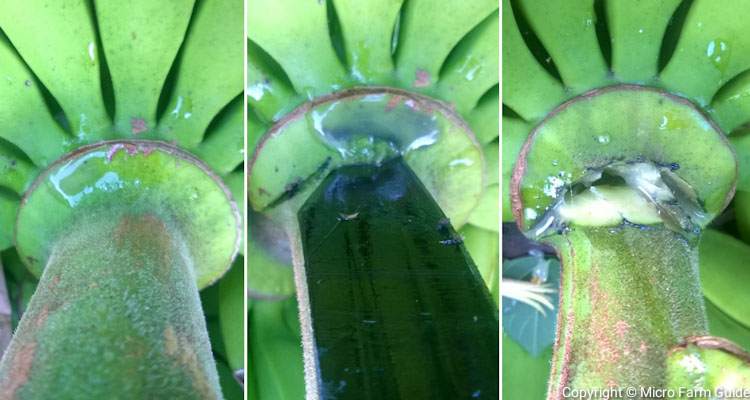
- Press gently on the hand to open the seam you made with the knife, then pull upwards to unhand it completely.
- Place the hand aside to allow the sap to drain, then repeat this process until you finish unhanding the entire bunch.
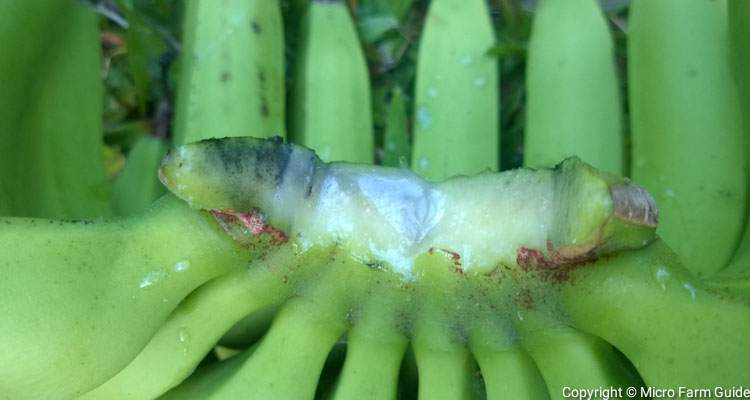
2. Cut Off Sections Of The Stalk
You can also use pruning shears or a lopper to cut the section of the stalk attached to the hand of the bananas.
This method is handy when separating large bunches, making them easier to carry.
However, while this method is a lot easier, it is ineffective on varieties that fold upwards as they mature.
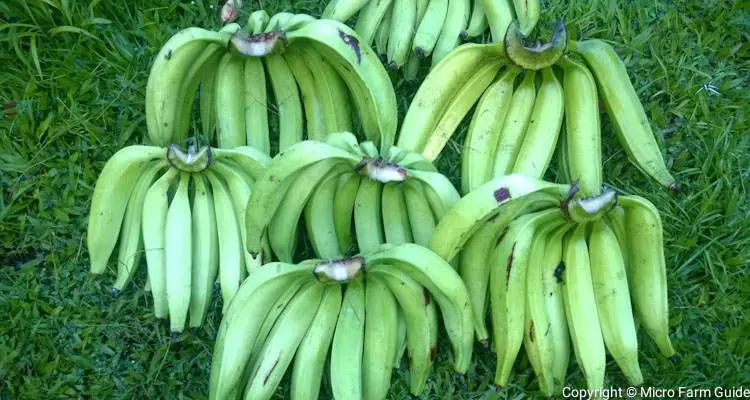
How To Speed Up Ripening Of Bananas
The easiest way to speed up the ripening of bananas is to place them in a paper bag with other ripe fruits, such as apples, then store them in a warm location.
The Ethylene gas emitted from the stem of the bananas and the other fruits will build up, stimulating the bananas to ripen faster.
You must monitor them closely since you usually see results within a day or two.
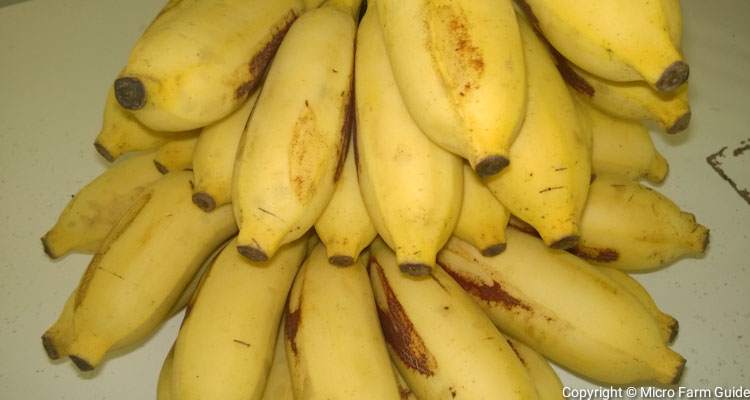
How To Delay Ripening Of Bananas
The key to slowing down the ripening of bananas is to control the amount of Ethylene gas the plant is exposed to.
You can keep them on the bunch and hang them in a cool, dark, ventilated area.
If you need to unhand the bananas, you can wrap the stems of the individual fruit with plastic wrap. Then store them away from fruits, such as tomatoes and apples.
Alternatively, you can use an Ethylene gas absorber, which helps keep other fruits and vegetables fresh.
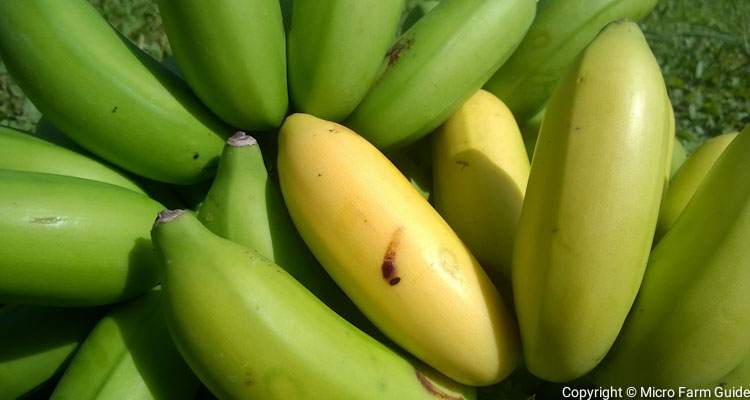
Banana Harvesting Tools
The main tool used to harvest bananas is the machete, known locally as a “cutlass.”
These come in various shapes and sizes, with some specifically designed to make harvesting bananas easier.
A banana de-handing knife comes in handy for larger operations. It allows you to unhand the bunches quickly and safely.
The curved knife is the most popular design, however I prefer the customized push tool, which seems better suited to some of our tightly packed local varieties.
To date, harvesting bananas is still a manual process, with uneven terrain being one of the main obstacles to developing and using fully mechanized alternatives.
Related Questions
Can You Pick Bananas Too Early?
Yes, you can pick bananas too early, at which point they will not ripen properly and are soft with a slightly bitter taste if cooked.
How Long Do Bananas Stay On Tree Before Ripe?
Banana fruit must stay on the tree for 3 to 4 months after the flower emerges before they start to ripen. Typically, this equates to about 6 weeks after the young fruits stop growing.
How Do You Know When Bananas Are Ready To Pick?
Bananas are ready to pick when you notice the fingers are well-developed, becoming plump and rounded, with a slight yellowing of the once dark green color.
How Many Times Can You Harvest Bananas From One Tree?
Each banana tree can produce one bunch of fruit, after which it dies and needs to be cut back. Subsequent plants within the same stool will then mature, producing similarly.
References
University Of Florida. Go Bananas. blogs.ifas.ufl.edu. Accessed March 2023
National Horticulture Board. Banana Harvesting For Export. [PDF] Accessed March 2023

